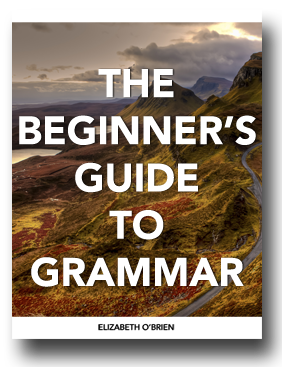Download your free grammar guide here.
Download your free grammar guide here.
Learn When To Use a Colon
Learn When To Use a Colon
- Home
- Punctuation
- Colons
Are you ready to learn a simple tip for using colons? Good!
Colons should be preceded by a complete sentence.
We'll look at three main uses for colons, and we'll see that each of them uses a complete sentence before the colon. Of course, there are exceptions to this rule, and we'll cover those below.
1. Introducing Lists
Many people mistakenly add a colon before every list. Remember that whatever comes before the colon needs to be a complete sentence.
No --> I need: milk, eggs, and sugar.
Yes --> I need milk, eggs, and sugar.
Yes --> I need a few groceries: milk, eggs, and sugar.
No --> My dog can: chase cats, shake hands, and lick ice cubes.
Yes --> My dog can chase cats, shake hands, and lick ice cubes.
Yes --> My dog can do the following: chase cats, shake hands, and lick ice cubes.
2. Introducing Single Items
You can use a colon to introduce a single thing when you want to emphasize it.
I could smell them from across the yard: charcoal-grilled burgers.
After shopping for eight hours, I finally found them: the perfect pair of jeans.
3. Between Two Complete Sentences
This only works if the second sentence states a logical consequence of whatever is stated in the first sentence.
Jim ate brownies constantly: He gained seven pounds.
Don't worry: We fixed the leak.
Are you tired of second-guessing your punctuation?
Let's fix that!
Imagine writing an email, a lesson plan, or even a professional document without stopping to question whether you’re using a comma, dash, or colon correctly.
Lifetime access. One-time payment. No subscriptions. No overwhelm. Click here to learn more! 💛
Exceptions
Here are some exceptions to the rule of having a sentence before the colon.
1. Introducing Dialogue in a Script
You might remember this from reading plays aloud in your English classes. Did you do this? Wasn't it fun?
Michael: So how do you do it?
Peter: You just think lovely, wonderful thoughts and they lift you up into the air.
2. Time, Bible Citations, Ratios
These seem pretty obvious, but I thought I'd include them anyway! Note that there is no space after the colon in these examples.
The party starts at 2:30.
John 3:16 is a popular Bible verse.
4:3 is the ratio of width to height of standard-definition television.
3. Between a Book's Title and Subtitle
The Millionaire Next Door: The Surprising Secrets of America's Wealthy
The Stuff of Thought: Language as a Window into Human Nature
Don't use a colon between a title and subtitle if the title contains quotation marks that end in an exclamation mark or question mark.
"Surely You're Joking, Mr. Feynman!" Adventures of a Curious Character
4. After the Salutation in Formal Letters (American English)
In casual letters, you would use a comma after the salutation, but you're writing a formal letter, use a colon.
To Whom It May Concern:
Ladies and Gentlemen:
Are you tired of second-guessing your punctuation?
Let's fix that!
Imagine writing an email, a lesson plan, or even a professional document without stopping to question whether you’re using a comma, dash, or colon correctly.
Lifetime access. One-time payment. No subscriptions. No overwhelm. Click here to learn more! 💛

Hello! I'm Elizabeth O'Brien, and my goal is to get you jazzed about grammar.
This is original content from https://www.english-grammar-revolution.com/colons.html
Our Free Guide Gives You A Fun Way
To Teach And Learn The Basics v

Elizabeth O'Brien is the creator of Grammar Revolution.
Her lessons are guaranteed to give you more confidence in your communication skills and make you smile. :)
